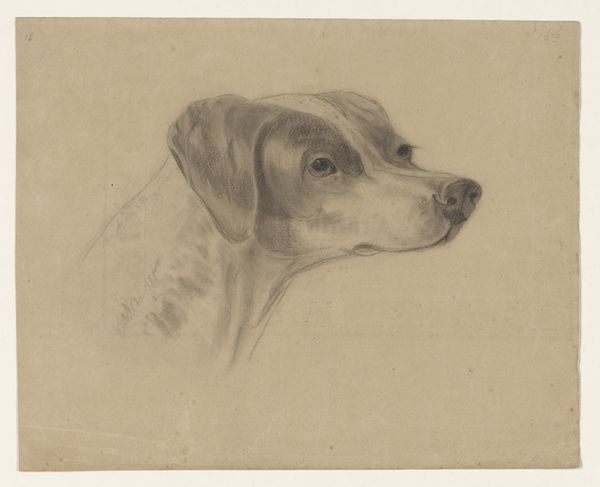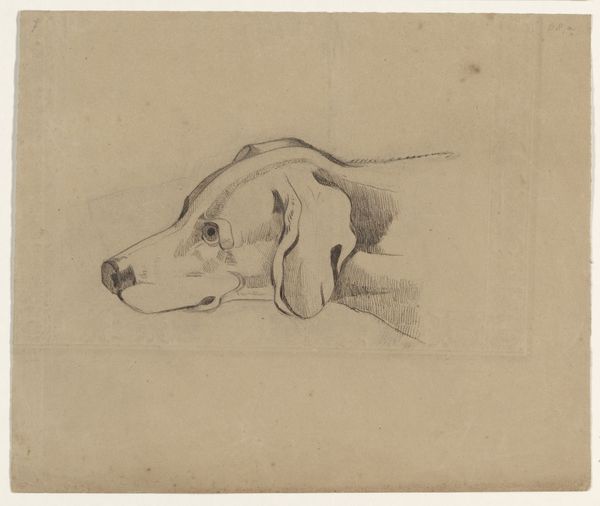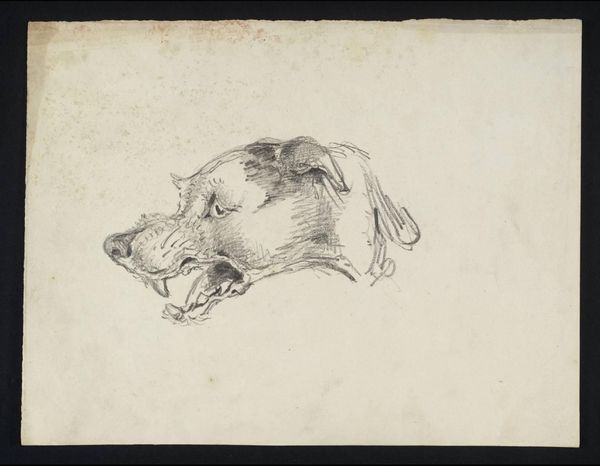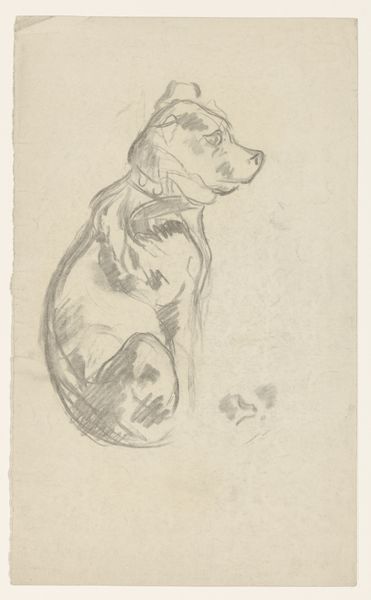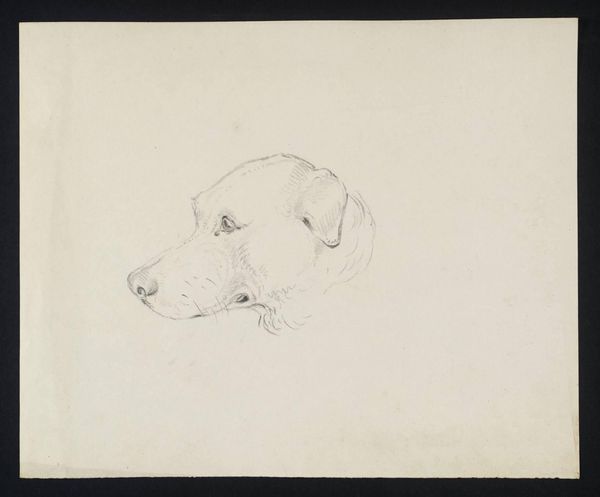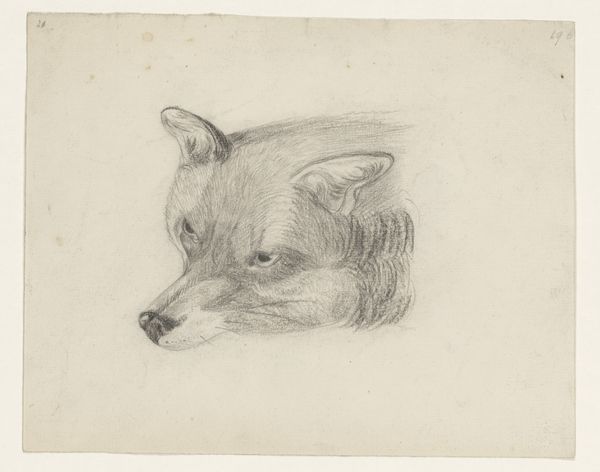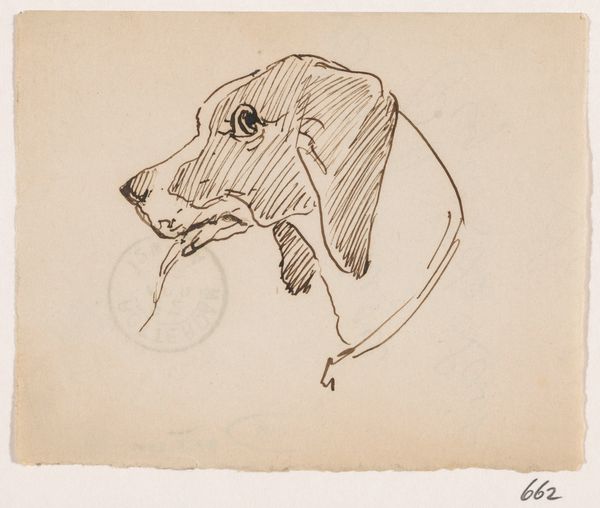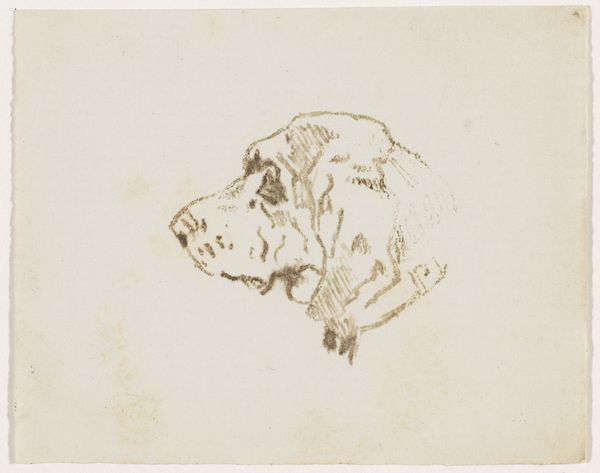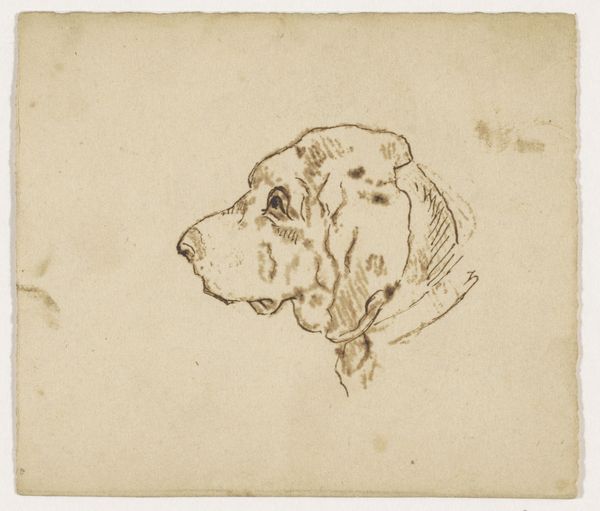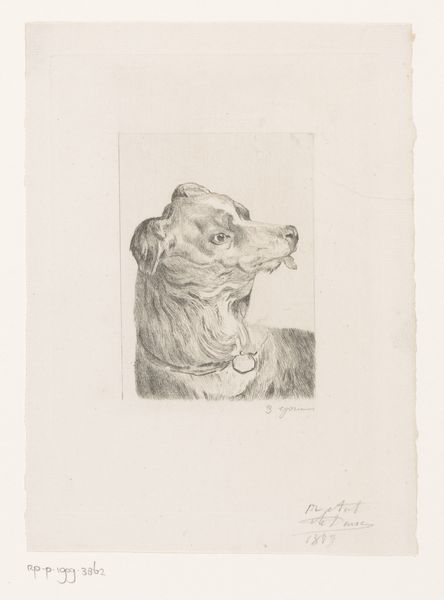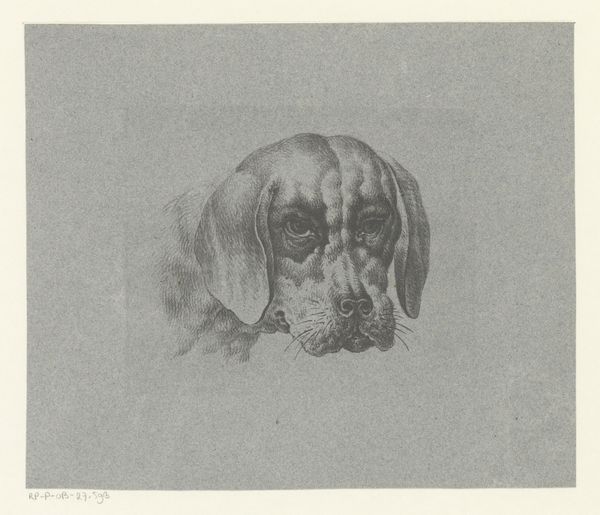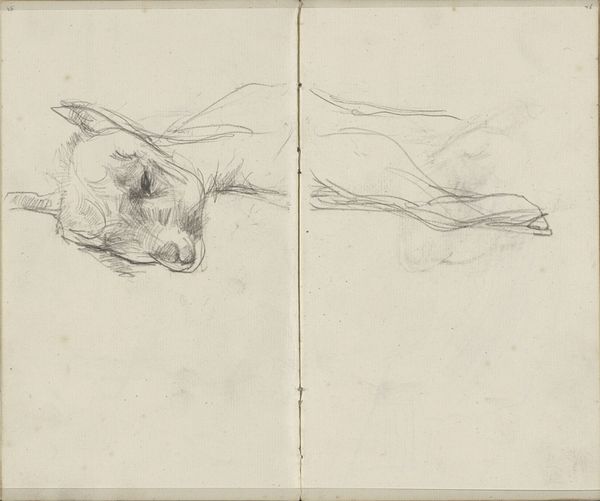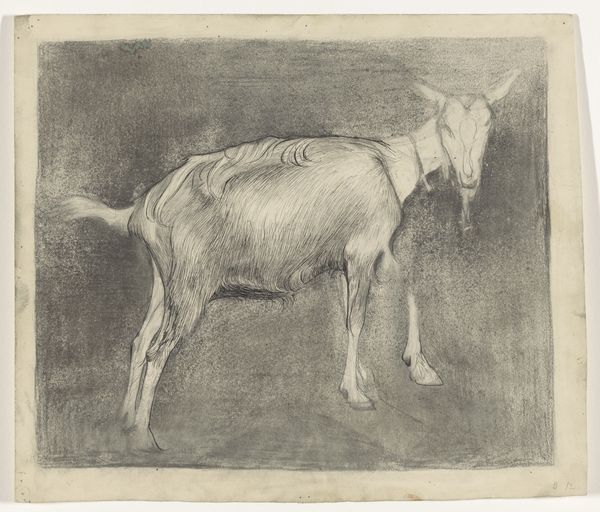
drawing, pencil
#
portrait
#
drawing
#
dog
#
pencil drawing
#
pencil
#
realism
Dimensions: height 217 mm, width 276 mm
Copyright: Rijks Museum: Open Domain
Editor: Here we have Johannes Tavenraat's "Head of a Dog," likely created sometime between 1819 and 1881. It's a delicate pencil drawing, and I’m struck by how alert and intelligent the dog seems, captured with such simple lines. How would you interpret this work? Curator: The image presents far more than just a realistic depiction of a dog. Can you sense the cultural status and symbolic weight animals held within 19th-century society? Dogs weren’t simply pets, they were often emblems of loyalty, protection, and even wealth. This drawing taps into that understanding. Editor: So the artist isn't just drawing a dog, but a symbol of something more? Curator: Precisely. Consider the gaze; it is direct and knowing. Does this not conjure thoughts of fidelity, vigilance? It connects to a long history of dogs appearing as allegorical figures in art and literature. What do you suppose the specific breed, coloring, and grooming, might have meant to viewers in Tavenraat’s time? Editor: Perhaps it signaled something about the dog's owner? Their status, interests… maybe hunting or companionship? Curator: Yes! The choice of details speaks volumes. It reflects prevailing cultural values, projecting ideals onto the animal. And this work becomes an interesting record, capturing how these cultural memories are embodied and reinterpreted in art. Editor: It's fascinating how much meaning can be packed into a simple drawing. I'll never look at pet portraits the same way again! Curator: Indeed. Every stroke and shading speaks volumes, resonating across historical, social, and personal realms.
Comments
No comments
Be the first to comment and join the conversation on the ultimate creative platform.
